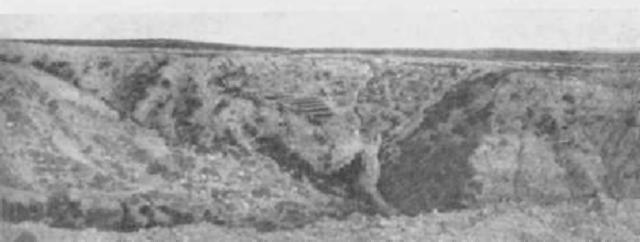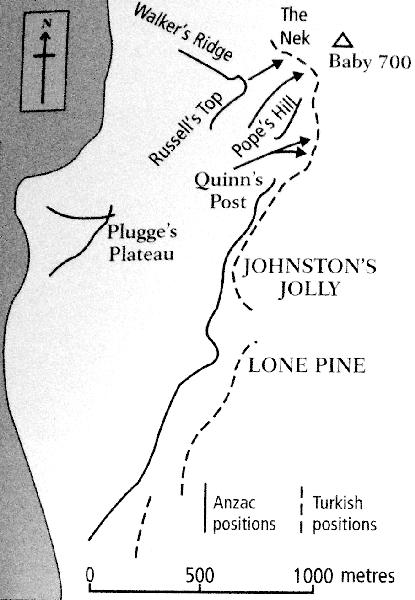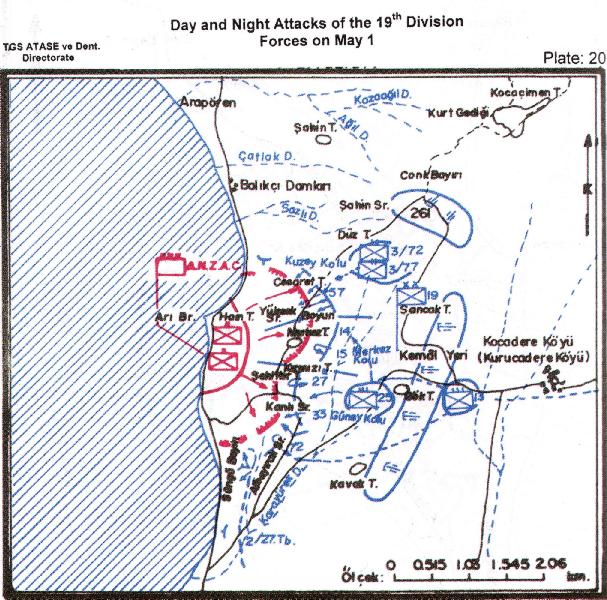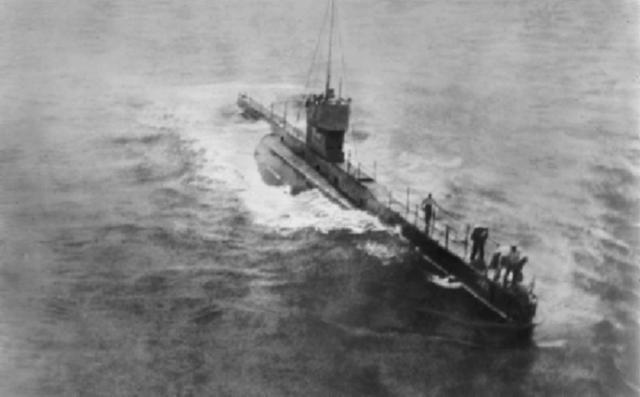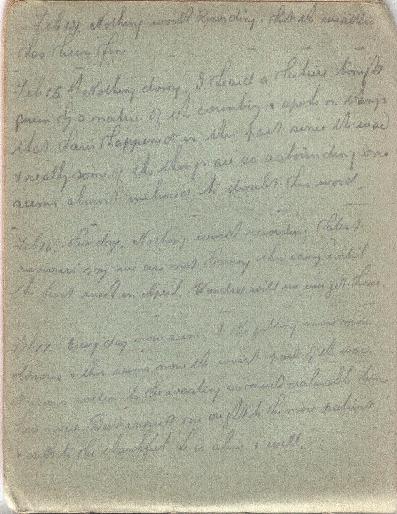Lieutenant Colonel Arthur Charles Niquet Olden produced the unit history for the 11th LHR in 1921 called the Westralian cavalry in the war: the story of the Tenth Light Horse Regiment, A.I.F., in the Great War, 1914-1918, which included a section specifically related to the Battle of Magdhaba is extracted below.
WESTRALIAN CAVALRY IN THE WAR p. 111
CHAPTER XVII. MAGHDABA.
At 6 o'clock on the morning of December 20th, 1916, the 10th Regiment received orders to march with other units of the 3rd Light Horse Brigade to the Divisional rendezvous at Bir Gympie. At ten o'clock that night the Anzac Mounted Division - less the 2nd Light Horse Brigade - marched for El Arish, the role of our own Brigade being to occupy Bir-el-Masmi. This place was reached at 5 a.m. the following morning (December 21st), and here word was received that El Arish had been entered by our troops without opposition. At 11 a.m. the 10th Regiment marched to Masaid, and thence to Bir-Abu-Zehari, where it bivouacked for the night. Shortly after daylight on the 22nd a further move was made to half a mile west of El Arish, where orders were received that the Anzac Mounted Division would concentrate at a point about two miles south of El Arish in preparation for a raid on the Turkish strong post at El Maghdaba. Arrived at the rendezvous, the Regiment remained in the Wadi El Arish, whilst three days' rations per horse and man were being issued. The weather being now extremely cold, the men carried sleeping blankets and overcoats on this occasion, and as much water as they could convey, as it was known that there was no available water excepting at Maghdaba, and even there - according to report - the wells had been mined by the Turks. El Maghdaba is situated on the banks of the Wadi El-Arish, about twenty-two miles, as the crow flies, from the sea. As a place of importance, in anything but a military sense, it is insignificant, but its commanding position, coupled with good communications by means of numerous tracks from the east leading to it, rendered it of extreme value as a jumping-off place for a flank movement against a force moving easterly along the coast route. Held resolutely by the enemy in conjunction with El Arish, a most serious obstacle would have been placed in the way of our forward move, and even with El Arish in our hands it was of vital necessity to clear up the Maghdaba situation before the advance could proceed. Consequently the High Command had decided
112 WESTRALIAN CAVALRY IN THE WAR
to send the Anzac Mounted Division - to which was attached the Imperial Camel Corps - to raid the enemy stronghold at Maghdaba, and, if possible, capture the garrison. The force, having completed rationing, commenced the approach march on Maghdaba, leaving the rendezvous shortly after midnight on December 23rd, 1916. The 3^ Light Horse Brigade, in the centre, marched along the Wadi bed, with the New Zealanders on the right and the Camel Corps on the left. The 1st Light Horse Brigade followed in reserve. On the flanks the country was ordinary desert of the sand-dune type, but the Wadi bed was of a chalky nature, and the 3rd Brigade became enveloped in clouds of fine white dust which settled on men and horses, giving them a phantom-like appearance in the morning. Soon after daylight our columns halted before Maghdaba, the approach march having been carried out with great rapidity in the circumstances. The Turkish defences were revealed, and consisted chiefly of two strong redoubts on the left bank of the Wadi, with ideal natural communication trenches along the deep washaways in the Wadi banks, skillfully improved by their engineers, so that they had effective communication not only between the redoubts, but also with the main Wadi bed and with the buildings on the right, or east, bank, where an excellent supply of water had been conserved in tanks. Almost completely surrounding the northern redoubt, and about 400 yards from it, was an arm of the main Wadi, about 25 feet in depth, which afforded excellent cover, and was held by enemy posts. To the south-west of the Turkish position were high, rough hills from which the Camel Corps eventually attacked. Reconnaissance reports from scouts showed that the positions covering Maghdaba were held in force by the enemy - our agents had previously estimated the Turkish strength at 4000, with some light field guns - and orders for an enveloping movement were received. At 9.30 a.m. the 3rd Light Horse Brigade commenced to push eastward round the enemy's right flank, the Camel Corps advanced frontally from the south-west, whilst the New Zealanders occupied a chain of high sand hills. The Inverness and Leicester Batteries (R.H.A.), in a saddle, filled the intervening gap. Our artillery immediately opened fire on the redoubts, and the troops moving towards their objectives gradually gained ground. The Turks, however, soon indicated that they were not to be easily dislodged, and as our advance proceeded,
WESTRALIAN CAVALRY IN THE WAR 113
they commenced in earnest to offer stout opposition with rifle and machine gun fire at a range of about 1200 yards. Casualties began to occur, amongst the first to be wounded being T./Major Timperley. Our aeroplanes now became active and rendered valuable assistance by reconnoitring the enemy positions, bombing and machine gunning them at a very low altitude. The 3rd Light Horse Brigade with the 8th Regiment on the right, and the 10th Regiment on the left - the extreme left of the Division - having previously moved easterly until nearly north of the enemy defences, now advanced dismounted in a south-easterly direction, supported by machine and Lewis guns, and successively
114 WESTRALIAN CAVALRY IN THE WAR
occupied the ridges approaching the redoubts. At 11.30 a body of Turks was seen to be advancing from east-south-east with the evident intention of enfilading our advance. Two troops of the 10th Regiment, with a Lewis gun and machine gun section, were sent forward to deal with this body. They drove back the enemy, who were seen to retire completely out of the fight. This movement cleared the whole left flank of our attack. By 12.30 the last ridge overlooking the wide plain through which the Wadi ran was in our hands, and all available troops were crowded on to it. Meanwhile, the Camel Corps and New Zealanders, despite stout opposition, had closed on the positions further south, and at 1.30 p.m. the 1st Light Horse Brigade, which had been left in reserve, attacked dismounted from the north-east, on our immediate right. Aerial contact patrols at this stage reported that the enemy had commenced to retreat. General Royston (commanding the 3rd Light Horse Brigade), a man of quick decision, decided that there was no time to be lost and ordered the 10th Regiment to take the occupied position of the Wadi arm by a mounted charge with fixed bayonets, whilst the 8th and 9th Regiments simultaneously attacked the northern redoubt dismounted. Issuing from behind the ridge, the Regiment galloped across the open plain in extended order under enemy rifle and machine gun fire. "A" Squadron (Captain Dunckley) on the right, "B" Squadron (Lieut. Rodsted) in the centre, and "C" Squadron (Captain Hamlin) on the left. The squadrons raced for the Wadi, holding their bayonet-tipped rifles like lances and cheering lustily. The Turks, paralysed by this novel form of attack, offered but a feeble resistance, and as the horsemen reached the outer edges of the Wadi, they threw up their hands in token of surrender - not, however, before several of their number had been bayoneted. This first onslaught yielded 90 prisoners (including 6 officers), 50 camels, 40 horses, and much ammunition and other war material. The squadrons dropped into the Wadi, and a party having been left to collect the prisoners, rapidly extended along its bed until "C" squadron on the left had swung right round to the south-eastern side of the redoubt. Flinging themselves from their horses, "A" and "B," with two troops of "C" Squadron, emerged from the west side of the Wadi, and pushed on dismounted towards the redoubt proper, whilst troops of the 1st Light Horse Brigade were seen attacking it from almost the opposite direction. Two troops under Lieut. F.W. Cox and Lieut. E. Ruse, had in the meantime ridden further round and had almost reached the Camel Corps, when suddenly they observed an opening leading straight to the redoubt.
WESTRALIAN CAVALRY IN THE WAR 115
With great gallantry these two troops charged right through the enemy outer line and reached the very heart of the redoubt. The balance of the Regiment rushed in support towards the objective, but the Turks, finding themselves attacked on all sides, and having suffered heavy losses, surrendered at a quarter-past four by hoisting numerous white flags. The raid had been completely successful, and the 10th Regiment had played a particularly brilliant part. Besides inflicting many casualties upon the Turks, the Regiment captured in all 722 prisoners, 57 camels, and 11 horses. In the final mounted charge on the redoubt, Lieut. Cox, in addition to leading his troop with consummate dash, performed a most gallant individual act in bringing up, under heavy fire, a spare horse for Lieut. A.W. Martin (whose mount had been shot under him) and assisting Lieut. Martin to remount. Lieut. Cox received the immediate reward of the Military Cross for his heroism on this occasion. The prisoners were collected and concentrated, and now came the most difficult undertaking of watering so large a number of thirsty horses and men. Fortunately the report as to the wells being mined proved incorrect, and the water supply and conveniences at Maghdaba were found intact. But even then the watering was no easy matter. The horses had not drunk for thirty hours, and the long, dusty march with the excitement of the final gallop had greatly intensified their thirst, and the water itself, though plentiful, was only accessible by a small number of animals at one time. However, it was completed soon after dark, and the Regiment, taking its prisoners along with it, joined the rest of the Brigade at the position of deployment, about three miles north-west of Maghdaba. At 11 o'clock that night the march back to El Arish commenced. The march continued throughout the night - a halt being made at 4.30 a.m. (December 24th), to draw rations from a camel convoy sent out to meet the column - and at 8.30 that morning Hod Masaid, a large oasis a few miles from El Arish, was reached. This splendid hod was to be our "home" for some weeks. Maghdaba, as far as the 10th Regiment was concerned, was a troop leader's triumph. Once the Wadi was captured, the broken nature of the terrain rendered concerted action on any large scale practically impossible, and here it was that the troops of the Regiment under their officers were afforded full opportunity of displaying initiative and dash. And well and worthily was this opportunity availed of. No finer performances exist in the Regimental records than those of Lieutenants Cox, Ruse, Palmer, J.K. Lyall, M.C., and Sweetapple on that day, and
116 WESTRALIAN CAVALRY IN THE WAR
it was greatly due to their efforts, splendidly backed by their men, that the 10th Regiment added to its laurels and played such a worthy part in the most brilliant cavalry raid of the war to date.
